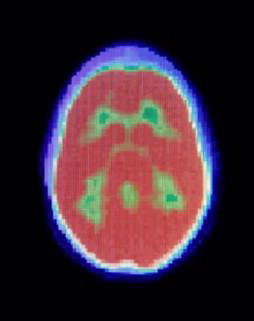FOR IMMEDIATE RELEASE | A PressPac Instant Replay*
ACS News Service Weekly PressPac: April 12, 2012
Advance toward an imaging agent for diagnosing Alzheimer's disease
“18F-Labeled Phenyldiazenyl Benzothiazole for in Vivo Imaging of Neurofibrillary Tangles in Alzheimer’s Disease Brains”
ACS Medicinal Chemistry Letters
Scientists are reporting development and initial laboratory tests of an imaging agent that shows promise for detecting the tell-tale signs of Alzheimer’s disease (AD) in the brain — signs that now can’t confirm a diagnosis until after patients have died. Their report appears in the journal ACS Medicinal Chemistry Letters.
Masahiro Ono and colleagues explain that no proven laboratory test or medical scan now exists for AD, which is claiming an increasingly heavy toll with the graying of the world’s population. Patients now get a diagnosis of AD based on their medical history and symptoms, and symptoms like memory loss often are identical to those of normal aging. Currently, the only definitive way to diagnose AD involves an autopsy with examination of brain samples for the presence of the clumps and tangles of abnormal protein that occur in the disease.
The scientists describe the synthesis and lab testing of a new imaging agent (called FPPDB), which bound tightly to ß-amyloid plaques and neurofibrillary tangles — signs of AD — in human brain samples. In normal laboratory mice, which served as stand-ins for humans, FPPDB stayed in the body long enough for a PET scan (a sophisticated medical imaging technique). With further development, the imaging agent may allow early AD diagnosis in humans, the scientists indicate.
The authors acknowledge funding from the Japan Society for the Promotion of Science and the Ministry of Education, Culture, Sports, Science and Technology, Japan.
![]()
Contact
Science Inquiries: Michael Woods, Editor, 202-872-6293
General Inquiries: Michael Bernstein, 202-872-6042


